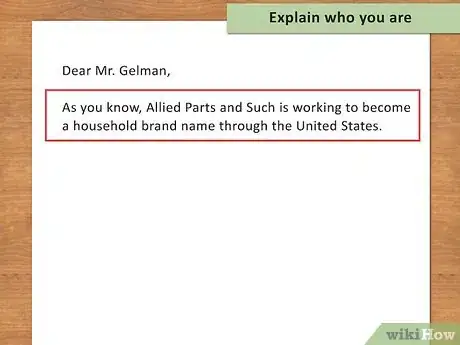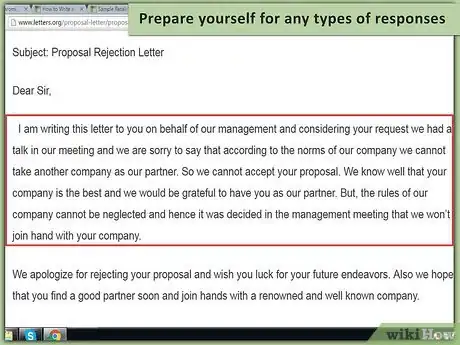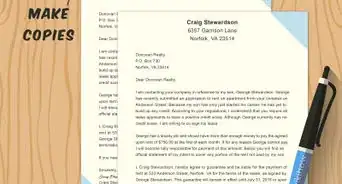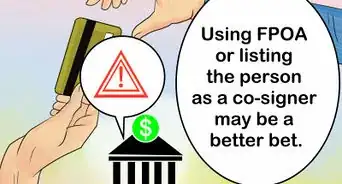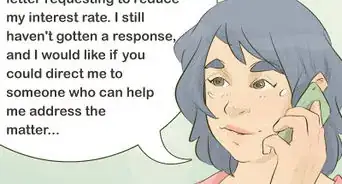This article was co-authored by Helena Ronis. Helena Ronis is Co-founder and CEO of AllFactors, a unified web analytics software to drive company's marketing and business growth. She has worked in product and marketing in the tech industry for over 8 years, and studied Digital Marketing & Analytics at the MIT Sloan School of Management Executive Program.
There are 15 references cited in this article, which can be found at the bottom of the page.
wikiHow marks an article as reader-approved once it receives enough positive feedback. In this case, several readers have written to tell us that this article was helpful to them, earning it our reader-approved status.
This article has been viewed 895,890 times.
Investment proposal letters are less formal than some business plans and similar documents. In some ways, an investment proposal is an abbreviated form of a business plan, wherein you can provide details about your business and the way you intend to use the funding investors provide to achieve financial ends. It is important to write your investment proposal letter with the audience in mind, so be aware of the concerns an investor may have when looking for new funding opportunities.
Steps
Sample Proposal Letters
Understanding Investment Solicitation Laws and Regulations
-
1Understand Regulation D securities issuances. The Securities and Exchange Commission (SEC) allows small companies to issue securities under Regulation D. This saves the small company the sometimes prohibitive expense of registering with the SEC; however, issuing securities under this regulation requires that the issuer closely follow a set of rules in their investor solicitations activities and publications. The specific rules depend on whether the issuance is made as private fundraising or as a general solicitation.[1]
-
2Know what information needs to be included in an investor letter. In general, investment solicitations are required to contain specific information, such as the securities' initial sale prices, the deal terms, the intended use of the funds, and financial statements for the issuer. Private fundraising issuances must also inform investors that they are buying restricted securities and that they cannot be resold for six months after the initial purchase.
- Businesses issuing through a general solicitation must publicly state they have filed SEC Form D and have followed regulations for advertising a 506(c) offering.[2]
Advertisement -
3Learn what type of investors, and how many of them, may be solicited. Investors in these types of securities offerings must be "accredited investors." These investors are those who understand financial markets and can be deemed responsible for their investment decisions. Specifically, these are people who earn over $200,000 per year (or $300,000 when combined with their spouse) or are worth over $1 million. Alternately, other businesses, institutions, partnerships, and nonprofits may qualify. The important thing is that the issuer takes time to ensure that their investors are accredited investors before accepting their investments.[3]
- Private fundraising offerings may also include up to 35 non-accredited individuals, provided they have a close, personal relationship with the issuer.[4]
-
4Check for state regulations. During the offering process, you will have to register with your state's securities regulatory body. This agency may require additional information be present in your investor solicitation or letter or impose additional restrictions on the number or required qualifications of investors. Check with this agency in your state before moving forward.[5]
Establishing Your Credibility
-
1Create an executive summary. An executive summary should be a printed version of your elevator pitch for your business and provide the basis for the introductory paragraph of your investor proposal letter.[6]
- Make sure your executive summary provides the problem your business can solve, as well as how you intend to solve it.
- Your executive summary should indicate the progress you have already made professionally, or the research you have conducted regarding the demographics you will market to, as well as your potential for success.
- Your summary should include any existing successes you have experienced in your field as well as what makes you qualified to pursue further profits in the industry.
-
2Explain who you are. An important part of your investment proposal letter is an explanation of who you are and why you are well qualified to receive an investment to expand or develop your business.[7]
- Include any achievements you have in your field to demonstrate your understanding of what the industry requires.
- List your experience managing employees in the industry to demonstrate your ability to successfully manage a team in pursuit of your business goals.
-
3Demonstrate your expertise in the field. While forming the introduction of your investment proposal letter you will need to convey your level of expertise in the relevant industry.[8]
- Briefly discuss your experience in the industry as reasoning for your expertise.
- Avoid using industry-specific jargon, as investors may not be well-versed in the specifics of your industry.
-
4Discuss your leadership team. If your business involves people other than yourself, you should include them in your investment pitch. Investors tend to fund people as much or even more than ideas, so giving the name and a brief description of the leadership team you have on board can give investors increased reason to provide you with funding.[9]
- Explain why your leadership team is uniquely qualified to excel in the industry of your choosing. You can do so by describing their experience, talents, or educational backgrounds.
- Include any advisors that you utilize that are outside the leadership team you have appointed but that may lend credibility to your endeavor.
- Securities laws require certain disclosures to protect potential investors as well as offerer. The issuer must comply or they will be subject to civil and criminal penalties.
-
5Issue an offering circular, if necessary. In some cases, federal or state regulatory agencies may require that an issuer create and distribute an offering circular for a private placement. The circular is essentially a summary of the full investment prospectus and hits all of the major highlights of the longer document. It is generally designed to drum up interest in a new issue.[10]
- This circular is required for "private placement" offerings, which are those not registered with the SEC or issued under Regulation D.[11]
Requesting Funding
-
1Specify how much funding you require. Investors like to work with concrete numbers, so provide them with specific amounts of money that you will need in order to achieve specific objectives. If you are unable to provide exact figures, include educated predictions based on your existing experiences.[12]
- The "use of funds" section of an investment prospectus is a legally-required section that shows investors what their money will be used for. Be sure to provide them with a solid idea of how much money will be required to accomplish the goals you wish to achieve.
- Explain what the exact results of the money invested will be and why you require the level of funding that you do.
-
2Explain how you will repay the investment clearly. The most important element of your plan to investors is how they will see a return on their investment. Provide them with clear objectives and use financial pro forma projections to show expected returns after the investment. However, be sure to mention that these are subject to specific disclosures and caveats.[13]
- You cannot provide a guaranteed or estimated return unless investors is receiving a bond or preferred stock.
- Provide specifics about what investors will receive in return for their funding. Will they receive a percentage of company ownership? Will they receive a share of the profits? Be clear about what the return on their investment will be.
- Make sure the return is valuable enough to warrant the investment and accept the possibility of turning a loss.
-
3Explain exactly how the funding will be used. Investors will want to know how their money is being used throughout your plan, so provide them with exact figures regarding what you intend to use the money for in order to establish confidence in those considering an investment.[14]
- Provide details on funding you will use for recruitment, marketing or operations.
- Identify project milestones that can be reached through varied levels of external funding.
- Remember that investors are as interested and concerned in your business plan as they are in the business itself. If it appears that you are disorganized or ill-prepared, most investors will be reluctant to invest in even a great business idea.
-
4Provide collateral if you are issuing debt. Collateral is something you own that you can leverage in exchange for investor funding. Collateral provides investors something they can receive in the event your business is not financially successful in the long run. However, this tactic only applies to debt and not always necessary in that case. Offering assets as collateral reduces future flexibility for financing.[15]
- Collateral can be anything that you own and are willing to put up against the value of your business. Things like houses offer a large amount of collateral and can give investors the incentive to provide funding to your business.
- If you do not provide any kind of collateral your proposal will need to provide an even stronger plan for returning on investments than otherwise, as investors will stand to lose even more if your business does not succeed.
- Remember that you will have to turn over the collateral you put up in the event your business is not a success, so it is not recommended that you anything you can’t do without as collateral.
-
5Only ask for enough to fund the next phase of your plan. While it may be tempting to request enough money to grow your business into a Fortune 500 company, typically the prudent thing to do is to request only enough to fund the next phase of your business plan.[16]
- Investors will not be looking for an extremely long term turnaround on their funding. Instead provide relatively short term plans for their money and how they can receive returns.
- By “thinking lean” in terms of your investment requirements you will demonstrate an understanding of the market and a business savvy that may make investors more likely to pitch in.
- That said, sometimes the market overvalues a new company or idea. If you think your company can take advantage of this expectation, consider taking as much money as possible with to gain capital with a low outlay of equity.
-
6Provide a risk disclosure statement. While you may believe your business is going to take off and earn your investors a lot of money, you need to be upfront about the risks involved in the investment. You may be tempted to downplay these risks, but legally you need to provide potential investors with enough information to make an informed decision about whether or not this is a good investment. You may wish to work with a lawyer to ensure you disclose enough information to protect you from liability if the investor loses their money.[17]
- Risk disclosure may include things like location of the business (for instance, if your business is located down the street from a competitor), or risks related to key personnel (such as if the company is overly dependent on the ideas of a single person—think Steve Jobs).
- There are specific state and federal rules that require the disclosure of certain information. Consider this the bare minimum, and note that it may not protect you from a lawsuit down the line if an investor loses money. Be as upfront as possible about the risks involved.
- Failure to make proper disclosures can have serious consequences, including facing civil and criminal charges.
Thanking Your Audience
-
1Send individual thank you notes to each potential investor. After you have sent out your investment proposal letters, wait a week or two and send out thank you notes to those you asked to invest. This demonstrates proper business etiquette as well as keeping your ideas fresh in the minds of investors.[18]
- The process of gaining investors can be long, so demonstrating your courtesy may be one of the things that differentiates you from other prospects.
- Even if an investor declines to participate, establishing a relationship with them can be beneficial for future investments or guidance on receiving investments from others.
-
2Be patient. Depending on the size of the investment that you have requested, a prospective investor may need to take some time to weigh the information you have provided them. It is important that you not rush an investor or demand an early decision, as rushed investors tend not to risk their money.[19]
- Some investors wait to see how other investors respond to your pitch in order for them to proceed. These investors will wait until the first few people pitch in before making an investment of their own.
- Prepare yourself for a series of “maybe” responses as investors weigh their options and their possibilities for return on an investment to your business.
-
3Keep your letter brief. While an investment proposal letter includes a significant amount of information, it should actually be less than a page long. Refine your letter by writing it multiple times and revising the information you choose to include. However, if the proposal is sent to multiple prospects, effectively making a private solicitation subject to investment regulations, the proposal letter would be better characterized as a offering document or circular transmittal letter.
- The first paragraph should establish your credibility within the industry as well as the other members of your team as assets that can aid in your success.
- Your second paragraph should lay out your plan to use the funding and what each investors can provide to the business.
- The third paragraph should lay out your financial needs as well as the possibilities for return on investments and risks involved.
Expert Q&A
Did you know you can get expert answers for this article?
Unlock expert answers by supporting wikiHow
-
QuestionHow else can I get funding if I don't reach out to investors?
 Helena RonisHelena Ronis is Co-founder and CEO of AllFactors, a unified web analytics software to drive company's marketing and business growth. She has worked in product and marketing in the tech industry for over 8 years, and studied Digital Marketing & Analytics at the MIT Sloan School of Management Executive Program.
Helena RonisHelena Ronis is Co-founder and CEO of AllFactors, a unified web analytics software to drive company's marketing and business growth. She has worked in product and marketing in the tech industry for over 8 years, and studied Digital Marketing & Analytics at the MIT Sloan School of Management Executive Program.
Business Advisor If you don't reach out to individual investors, you can seek out business partners that may be willing to put up some of the funding. Alternatively, you can ask friends and family if they'd be willing to lend you some money without technically making them investors. You can also go to a bank and take out a credit line or small business loan.
If you don't reach out to individual investors, you can seek out business partners that may be willing to put up some of the funding. Alternatively, you can ask friends and family if they'd be willing to lend you some money without technically making them investors. You can also go to a bank and take out a credit line or small business loan. -
QuestionHow can I write a letter from a bank to customers on reducing their interest rates?
 Community AnswerIt is likely that corporate for the bank will have form letters for this.
Community AnswerIt is likely that corporate for the bank will have form letters for this. -
QuestionHow do I write a letter inviting a bank to open a branch in our town?
 Community AnswerThe letter should include the location, traffic, ambiance and cost-lease terms.
Community AnswerThe letter should include the location, traffic, ambiance and cost-lease terms.
Warnings
- The information in this article should not be construed as professional legal or financial advice. Failure to adhere to SEC regulations in the solicitation of investors, the offering of securities, the disclosure of information, or other aspects of securities offerings may result in fines or imprisonment.⧼thumbs_response⧽
References
- ↑ http://www.sec.gov/answers/regd.htm
- ↑ http://www.forbes.com/sites/tanyaprive/2013/09/23/general-solicitation-ban-lifted-today-three-things-you-must-about-it/2/#27c60dc421a4
- ↑ https://www.sec.gov/info/smallbus/secg/general-solicitation-small-entity-compliance-guide.htm
- ↑ http://www.forbes.com/sites/tanyaprive/2013/09/23/general-solicitation-ban-lifted-today-three-things-you-must-about-it/#3adf6fb635a3
- ↑ http://www.sec.gov/answers/regd.htm
- ↑ https://www.projectmanager.com/blog/write-an-executive-summary
- ↑ https://requestletters.com/home/how-to-write-an-investment-offer-letter-with-sample
- ↑ https://requestletters.com/home/how-to-write-an-investment-offer-letter-with-sample
- ↑ https://www.entrepreneur.com/starting-a-business/how-to-introduce-investors-to-your-team-the-right-way/331580
- ↑ http://www.investopedia.com/terms/o/offeringcircular.asp
- ↑ http://www.seclaw.com/introduction-private-placements/
- ↑ http://www.sample-resignation-letters.com/writing-an-investment-proposal-letter-with-sample.html
- ↑ https://requestletters.com/home/how-to-write-an-investment-offer-letter-with-sample
- ↑ http://www.forbes.com/sites/iese/2013/09/18/presenting-your-proposal-5-ways-to-convince-investors-to-back-your-idea/#1948059f43de
- ↑ https://www.investopedia.com/terms/c/collateral.asp
- ↑ http://www.forbes.com/sites/iese/2013/09/18/presenting-your-proposal-5-ways-to-convince-investors-to-back-your-idea/#1948059f43de
- ↑ https://www.lawinsider.com/dictionary/risk-disclosure-statement
- ↑ http://www.forbes.com/sites/iese/2013/09/18/presenting-your-proposal-5-ways-to-convince-investors-to-back-your-idea/#1948059f43de
- ↑ http://www.forbes.com/sites/iese/2013/09/18/presenting-your-proposal-5-ways-to-convince-investors-to-back-your-idea/#1948059f43de
About This Article
Before you write an investor proposal letter, read through the requirements of Regulation D under the Securities and Exchange Commission (SEC) so you’ll know the specific rules you have to follow in the letter. In general, your investor letter should include the securities’ initial sales price, the deal terms, the intended use of the funds, and financial statements for the issuer. You should also include information about your leadership team to help build investor confidence. For advice from our financial reviewer on how to request funding, keep reading!








